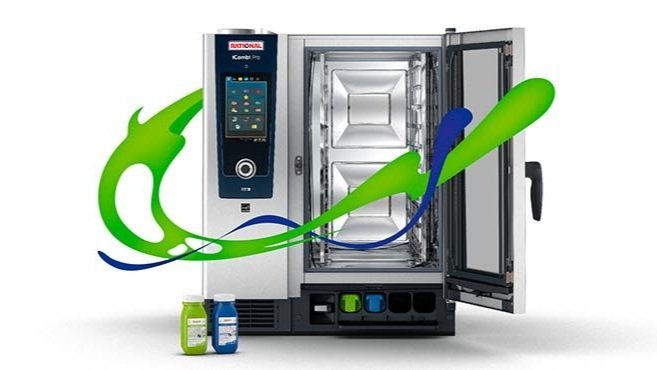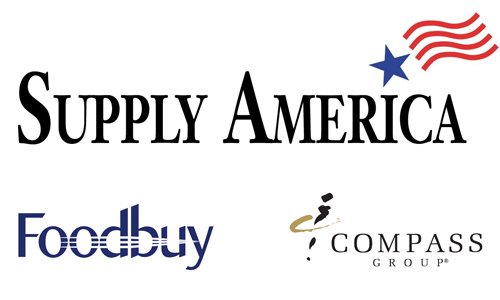In the foodservice industry, having dependable, up-to-date equipment is a competitive edge, but managing these investments can be challenging. High upfront costs for new equipment can put pressure on cash flow, impacting other areas of your business. Financing offers an effective solution, giving you access to necessary tools while keeping your cash reserves intact. Our partnership with Centra Culinary Finance allows us to offer flexible, foodservice-centered financing options, empowering your business to grow confidently on manageable payment terms.
Top 10 Time-Saving Restaurant Appliances Every Chef Needs
In the fast-paced world of restaurant kitchens, efficiency is key. The right appliances can save time, reduce labor costs, and ensure consistent quality. Whether you own a bustling fine-dining establishment or a cozy café, having the right tools can make all the difference. Here are the top 10 time-saving restaurant appliances every chef needs.
- Commercial Food Processor A food processor is a must-have for chopping, slicing, dicing, and shredding ingredients quickly. It significantly cuts down on prep time and ensures uniformity in food presentation.
- High-Speed Blender For making soups, sauces, smoothies, and purees in record time, a high-speed blender is essential. These powerful machines can handle even the toughest ingredients, saving chefs valuable minutes.
- Commercial Induction Cooktop Induction cooktops heat up instantly and cook food faster than traditional stovetops. They also allow for precise temperature control, leading to more consistent results.
- Rapid Cook Oven Combining microwave, convection, and impingement cooking technologies, rapid cook ovens can prepare dishes up to 10 times faster than conventional ovens without sacrificing quality.
- Automatic Panini Press An automatic panini press ensures even cooking and grilling of sandwiches, meats, and vegetables, reducing hands-on time and improving kitchen efficiency.
- Commercial Dishwashers A high-performance commercial dishwasher can clean and sanitize dishes in just a few minutes, eliminating long wait times and ensuring a steady supply of clean dishware.
- Vacuum Sealer Perfect for preserving ingredients and extending their shelf life, a vacuum sealer also helps with sous vide cooking, which ensures precise, consistent results with minimal effort.
- Automatic Coffee Machine For restaurants serving coffee, an automatic coffee machine ensures consistency, speed, and quality in every cup, eliminating the need for manual preparation.
- Dough Mixer A powerful dough mixer is essential for bakeries and pizzerias, saving time and effort in kneading and mixing dough to perfection.
- Ice Machine An efficient ice machine ensures a constant supply of ice, crucial for beverage service, food preservation, and overall kitchen operations.
Investing in these time-saving appliances can help restaurants streamline operations, increase productivity, and deliver high-quality food faster. By optimizing efficiency in the kitchen, chefs and restaurant owners can focus more on creativity and customer satisfaction. If you’re looking to upgrade your kitchen, consider these essential appliances to enhance performance and reduce stress in a busy environment.
Hatco: Meeting & Exceeding Customer Needs for Success
Celebrating Excellence: RATIONAL Wins 2024 ENERGY STAR Partner of the Year Award
RATIONAL’s receipt of the ENERGY STAR Partner of the Year award underscores their leadership in promoting sustainable practices and energy-efficient solutions within the commercial kitchen equipment sector. Their dedication to excellence and innovation continues to drive positive change, setting a benchmark for others in the industry to follow.
Hosting Essentials with John Boos
Get ready to take your hosting prowess to new heights with the Charcuterie Board with Handles from John Boos.
As we eagerly anticipate Memorial Day's arrival, the joy of hosting and catering intertwines harmoniously. Prepare to dazzle your guests with an unparalleled display of elegance and flavor, courtesy of John Boos.
Unlocking the Secrets of Insulated Food Delivery Bags: Your Ultimate Guide
Unveiling the Hidden Costs of Commercial Ice Machine Ownership
The Florida State Fair is Here! & so is Fried Food and Donut Burgers…
Revolutionizing Kitchen Efficiency: The Rise of High-Speed Ovens
The rise of high-speed ovens signifies a revolution in kitchen efficiency, offering a myriad of benefits for operators across diverse foodservice establishments. From enhanced cooking methods to flexible options and user-friendly interfaces, these ovens are reshaping the culinary landscape, providing a perfect blend of speed and quality.
Introducing iCareSystem AutoDose: The Revolutionary Cleaning Solution for iCombi Pro Tabletop Units
Accelerated Shelf-Life Testing: Speeding Up the Path to Product Launch
In the fast-paced world of consumer packaged goods (CPGs), being the first to introduce an exciting new product can be the key to success. However, launching too early can jeopardize quality and safety. Shelf-life testing plays a crucial role in determining a product's viability, but traditional methods can be time-consuming. Enter accelerated shelf-life testing (ASLT), a technique that simulates conventional shelf-life testing in a fraction of the time. This article explores the concept of ASLT, its benefits, and important considerations for successful implementation.
Understanding Conventional Shelf-Life Testing:
Conventional shelf-life testing involves monitoring a product over its expected lifespan to assess how long it remains acceptable. While food safety is a factor, most best-before dates are primarily based on quality attributes such as flavor, color, texture, and physical changes, which can be challenging to predict accurately.
Accelerated Shelf-Life Testing (ASLT):
ASLT is a technique that condenses traditional shelf-life testing timeframes by subjecting food products to exaggerated storage conditions. These conditions include higher temperatures, increased humidity levels, intense light exposure, and other stress factors that accelerate natural deterioration processes. ASLT provides valuable insights into product stability, quality, and safety in a significantly shorter time frame, enabling faster decision-making for manufacturers.
The Role of Acceleration Factors:
ASLT relies on acceleration factors, often calculated using Q10 temperature values. The Q10 value measures the rate of change in a biological or chemical system as a result of a 10°C temperature increase. By raising the storage temperature, it's possible to speed up the rate of reactions. However, applying a uniform acceleration factor is not always straightforward due to the complexity of food products.
Considerations and Limitations:
While ASLT offers numerous advantages, it has limitations. ASLT may not track microbiological and organoleptic changes linearly, which is critical for products relying on organoleptic acceptability. Some product attributes remain unaffected by temperature changes, and other factors like ultraviolet light exposure, consumer handling, and gravity are unrelated to temperature but can be accelerated differently. Thus, ASLT can present a risk of overestimating or underestimating product shelf life.
Strategic Monitoring and Evaluation:
To obtain accurate ASLT results, it's essential to conduct regular sampling and testing at predetermined intervals. Focus on product parameters with higher risk and allocate resources accordingly. Comparing ASLT results with a parallel real-time shelf-life study provides invaluable insights into how well the accelerated model corresponds with reality.
Practical Conditions:
Choosing the right conditions for ASLT is critical. Some products, like chocolate or ice cream, may not respond well to simple temperature acceleration, as extreme heat could initiate undesirable changes unrelated to time. In such cases, alternative approaches are needed.
Accelerated shelf-life testing is a valuable tool for expediting product development and quality control. By simulating and accelerating the natural deterioration processes, manufacturers can assess product stability and safety more quickly. However, success in ASLT relies on careful consideration of acceleration factors, experimental design, monitoring, validation, and predictive techniques. For manufacturers willing to invest the time in doing it right, ASLT can be a game-changer in meeting consumer expectations and staying competitive in the market.
















